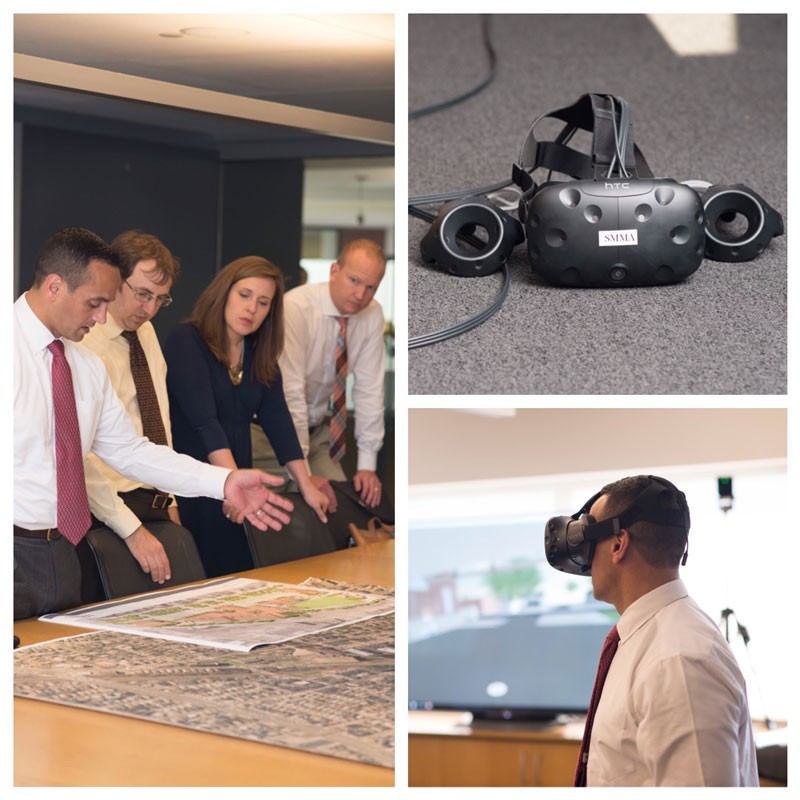Two projects on which SMMA has leveraged its VR capabilities are 321 Harrison Avenue and Somerville High School—opposite in typology, but commensurate in scope and scale. For both, the clients came in to SMMA’s Cambridge office to see where their respective designs stood, and left with a heightened sense of what their buildings would become. These visits also yielded a number of lessons learned for the design team, particularly in terms of how to best communicate design intent and build consensus.
Michael Pardek and Matt Rice, project architects on these commissions, offer insight into the value that VR brought to each, and why it is such an effective tool for designers.

